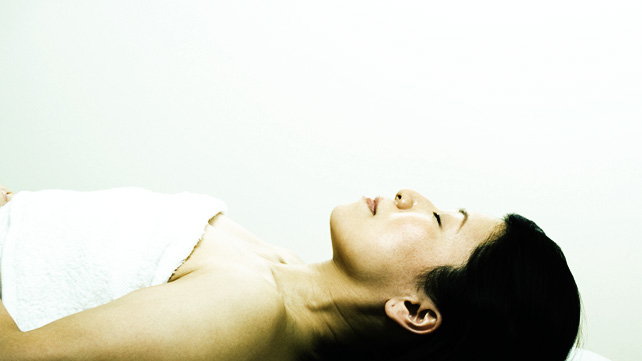 Jacobson’s relaxation technique is a type of therapy that focuses
on tightening and relaxing specific muscle groups in sequence. It’s also
known as progressive relaxation therapy. By
Jacobson’s relaxation technique is a type of therapy that focuses
on tightening and relaxing specific muscle groups in sequence. It’s also
known as progressive relaxation therapy. By concentrating on specific areas and tensing and then relaxing them, you can become more aware of your body and physical sensations.
Dr. Edmund Jacobson invented the technique in the 1920s as a way to help his patients deal with anxiety. Dr. Jacobson felt that relaxing the muscles could relax the mind as well. The technique involves tightening one muscle group while keeping the rest of the body relaxed, and then releasing the tension.
Professionals who teach this technique often combine it with
breathing exercises or mental imagery. A guide may talk you through the
process, starting at the head or feet and working through the body.
Benefits
A multitude of possible health benefits
Practicing relaxation techniques can have a variety of health benefits, such as:
Jacobson’s relaxation technique is commonly used to help people with insomnia as well. Over the years, several studies have looked at whether it’s effective. Some have had mixed results, while others show more promise. In some cases, people who didn’t get more sleep still felt better rested after relaxation therapy.
- relieving anxiety
- reducing work-related stress
- lowering your blood pressure
- reducing the likelihood of seizures
- improving your sleep
Jacobson’s relaxation technique is commonly used to help people with insomnia as well. Over the years, several studies have looked at whether it’s effective. Some have had mixed results, while others show more promise. In some cases, people who didn’t get more sleep still felt better rested after relaxation therapy.
Whole-body technique
Joy Rains is the author of Meditation Illuminated: Simple Ways to Manage Your Busy Mind.
She recommends beginning the relaxation therapy with a breathing
exercise and then moving from the feet up. She suggests the following
exercises:
Feet
- Bring your attention to your feet.
- Point your feet downward, and curl your toes under.
- Tighten your toe muscles gently, but don’t strain.
- Notice the tension for a few moments, then release, and notice the relaxation. Repeat.
- Become aware of the difference between the muscles when they’re tensed and when they’re relaxed.
- Continue to tense and relax the leg muscles from the foot to the abdominal area.
Abdomen
- Gently tighten the muscles of your abdomen, but don’t strain.
- Notice the tension for a few moments. Then release, and notice the relaxation. Repeat.
- Become aware of the difference between the tensed muscles and the relaxed muscles.
Shoulders and neck
- Very gently shrug your shoulders straight up towards your ears. Don’t strain.
- Feel the tension for a few moments, release, and then feel the relaxation. Repeat.
- Notice the difference between the tensed muscles and the relaxed muscles.
- Focus on the neck muscles, first tensing and then relaxing until you feel total relaxation in this area.
Localized technique
Localized technique
You can also apply relaxation therapy to specific parts of the
body. Nicole Spruill, CCC-SLP, is a speech specialist. She uses
Jacobson’s relaxation technique to help professionals who sing or do a
lot of public speaking prevent and recover from vocal cord strain.
Here is the three-step process Spruill recommends:
Here is the three-step process Spruill recommends:
- Close your hands tightly to feel the tension. Hold for 5 seconds, and slowly allow the fingers to release one by one until they’re completely relaxed.
- Press your lips tightly together and hold for 5 seconds, feeling the tension. Slowly release. The lips should be completely relaxed and barely touching after the release.
- Finally, press your tongue against the roof of your mouth for 5 seconds, and notice the tension. Slowly relax the tongue until it’s sitting on the floor of the mouth and your jaws are slightly unclenched.
No comments:
Post a Comment